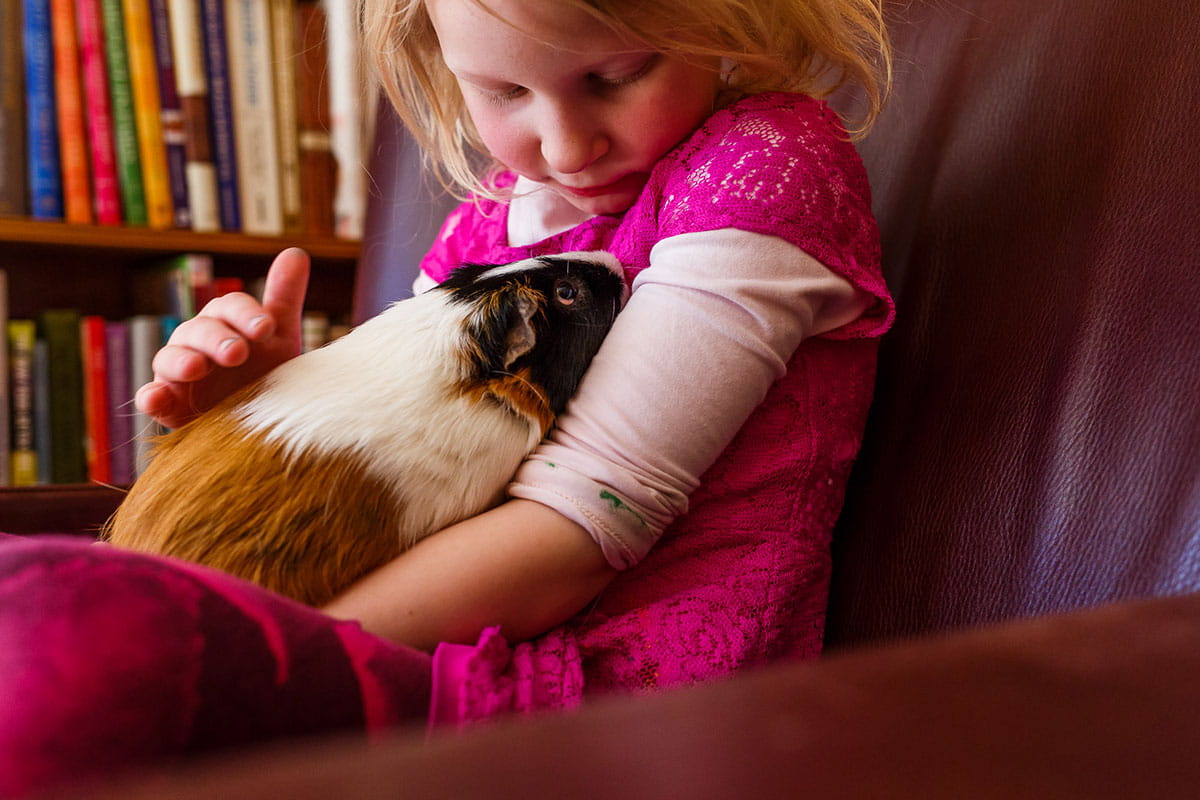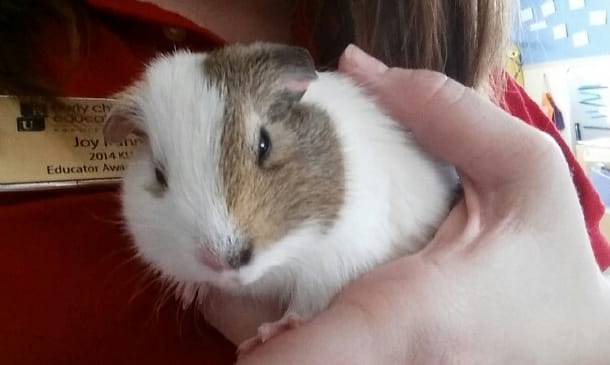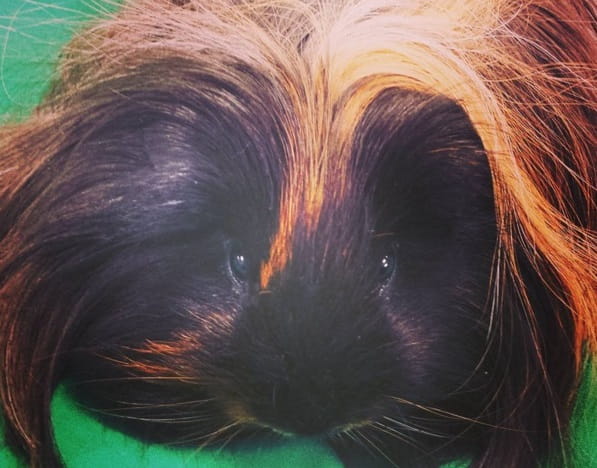What Classroom Pets Teach Kids: 4 Lessons from Furry Friends

Class pets aren’t just cute and cuddly—they can help boost kids’ social-emotional skills and their sense of responsibility. That's why guinea pigs, hamsters, and fish are valued classmates at many of our centers.
Here are a few of the pets in our menagerie...and the lessons they teach our tots!
1. Pets in the Classroom Teach Responsibility
The transitional kindergarten classroom at Herndon Avenue KinderCare in Pinedale, California, is home to three class pets: Chucho the hamster, Elsa the fish, and a frog (which has yet to be named). Teacher Margarita Hernandez uses the pets to teach important lessons about caring for animals—and the importance of keeping their habitats clean.
“I make sure to talk to my students about the importance of respecting a pet's home,” says Hernandez. “We read books about our pets, what they eat, and how we should take care of them."

2. What Does a Guinea Pig Teach? Kindness, of Course
Fidget is teacher Joy Kuhn’s right-hand man, er, guinea pig. “I love that having a class pet reiterates respect for our classroom rules, like treating others the way you would like to be treated,” says Kuhn, a KinderCare teacher in Colorado Springs, Colorado. “We take turns helping care for him and giving him the essentials, like water, food, and clean bedding.”
That teaches a big lesson, Kuhn notes: “By experiencing what it takes to care for another living thing, we have begun to care for each of our classmates more, too."
3. Classroom Pets Teach Kids to Love Themselves
“Families tell us that our hamster helps get the children excited about coming to school,” says KinderCare Center Director Michele Taglia in Whippany, New Jersey.
Enter the power of Fuzz Lightyear, an adorable hamster with beady little eyes. According to Taglia, positive feelings about a pet can lead to developing positive feelings about one’s self and school, too. "Fuzz creates so much excitement," Taglia notes. "Children can’t wait to come to school and watch Fuzz run around in her hamster 'car.'"
But it goes beyond anticipating (rather than dreading) school: “A good relationship with a pet can help children develop non-verbal communication skills, compassion, and empathy,” Taglia says. “The benefits are endless."

4. They Can Help Kids Overcome Anxiety, Too
Separation anxiety is hard to conquer, especially at drop-off time. Harry, the guinea pig at Auburn Hills KinderCare in Michigan, is helping Laura Kotasek’s toddlers feel a little more comfortable.
“When I tell a child Harry wants to see them, they get really excited,” she said. “Children get especially excited when I let them feed him something.” (And Harry is more than happy to help toddlers overcome their fears if it means a second, third, and sometimes even fourth breakfast.)
“Guinea pigs are incredibly social,” said Kotasek. Parents love following the adventures of Harry, and are grateful for his help with drop-off every morning.
Wondering if you should have a class pet?
There’s a lot to consider before a pet joins your classroom. For one: allergies! Check with every family and make sure a pet is the right fit for every child in your room. And if you can’t go the furry route...have you considered frogs or a fish in your classroom? Amphibians and fish teach responsibility, too.




.jpg?la=en&h=800&w=1200&hash=799F5BD6E84A71FB0D1C8E657FE7F226)
